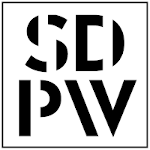Wykaz obszarów badawczych związanych z tagiem Tlumienie-drgan:
| # | Obszar badawczy | Dziedzina naukowa |
|---|---|---|
| 1 |
The research area concerns the formation of torsional and bending vibrations of the crankshafts resulting from the excitations related to the operation of the internal combustion engine. As part of the work, it is planned to measure the torsional vibrations of the shaft end and transverse vibrations of the engine body, and to develop a dynamic model of the crankshaft. On this basis, the following issues can be considered:
- influence of excitations on vibrations of engine components,
- analysis of the influence of torsional vibration dampers (their structure and mechanical properties) on vibrations of crankshafts,
- analysis of torsional-bending vibrations occurring in crankshafts,
- vibroacoustic diagnostics of elements of crank systems.
|
|
| 2 |
vibroacoustics, noise and vibration propagation, minimization of vibrations and noise, technical diagnostics
|
|
| 3 |
vibroacoustics, noise and vibration propagation, minimization of vibrations and noise, technical diagnostics
|
|
| 4 |
Smart materials are structures whose physical properties can be changed by an external factor. Examples of this type of material are piezoelectrics, rheological liquids or Vacuum Packed Particles, which are the main scientific interest of my team. VPP are structures made of loose granular material, closed in a tight space in which the so-called underpressure. The change in internal pressure causes macroscopic changes in the physical properties of the structures, which allows them to be included in the so-called "smart" materials. The work carried out focuses on the use of this type of structures in the semi-active damping of vibrations and noise. Other works concern modeling the behavior of non-classical materials (magnetorheological fluids, solid rocket fuels, granular composites). The potential subject of research may also include the areas of broadly understood modeling of adaptronic systems, modeling of dynamic processes with the use of FEM and DEM.
|
